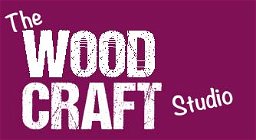121 Box Making courses
FAA LEVEL 3 AWARD IN PRINCIPLES OF SAFEGUARDING AND PROTECTING CHILDREN, YOUNG PEOPLE OR VULNERABLE ADULTS (RQF) * Face to Face Classroom: One day course * Virtual Classroom: 3 session of 2 ½ hours * For those who work with children, young people and vulnerable adults * Promotes awareness of safeguarding, enabling learners to identify problems and show where to report these to -------------------------------------------------------------------------------- BENEFITS OF THIS COURSE: * In 2018/2019, 415,050 concerns of abuse were raised * In 2018/2019, there were nearly 400,000 children in need * 52,300 children were subject to a child protection plan * 63% of adult safeguarding concerns are for people over 65 * 1 in every 42 adults aged 85+ have required safeguarding enquires... * Child abuse often goes unreported and unrecorded - till it is picked up on by someone who then does something about it. * This Level 3 Safeguarding course gives people the skills and knowledge to make a real difference to a person's life! -------------------------------------------------------------------------------- COURSE CONTENTS: * Safeguarding and protecting children, young people or vulnerable adults * How to respond to evidence or concerns that a child, young person or vulnerable adult has been abused * Safeguarding legislation and guidance * Indicators of abuse or neglect * Making judgements * Communicating worries and concerns * Roles and responsibilities * Sharing information * Allegations and complaints * Reporting allegations and complaints -------------------------------------------------------------------------------- ACCREDITED, OFQUAL REGULATED QUALIFICATION Our Safeguarding and Protecting Children, Young People or Vulnerable Adults training course is a nationally recognised, Ofqual regulated qualifications accredited by First Aid Awards Ltd [http://www.firstaidawards.com/]. This means that you can be rest assured that your Principles of Safeguarding and Protecting Children, Young People or Vulnerable Adults Certificate provides information for best practice to make a real difference to protect the health and wellbeing of our most vulnerable. The Ofqual Register number for this course is 601/8471/1 --------------------------------------------------------------------------------

Driver CPC - 1 Day Periodic 7 Hour Course/ Drivers Hours and Working Time and Tachograph - Grantham
By Total Compliance
Our "Driver Compliance and Wellbeing Training" module offers a holistic approach to driver development and safety. This combined training covers two crucial areas: Drivers' Hours and Working Time compliance Tachograph, as well as driver health and well-being. Drivers Hours and Working Time Training and Tachograph: * Course introduction, objectives, and expectations. * Understanding driving limits, breaks, and rest periods. * Compliance with the Working Time (Road Transport) Directive. * Legal responsibilities, record keeping, and enforcement of regulations. * End-of-course review and feedback. Driver Health and Wellbeing Training Content: * Exploring the link between health and work performance. * Mental health awareness and fitness to drive. * Making healthy dietary choices for drivers. This module is designed for professional drivers and transport operators looking to excel in both compliance and driver well-being. Join us to ensure safety, compliance, and improved productivity on the road. #DriverTraining #Compliance #Wellbeing #RoadSafety

GUITAR BUILDING COURSE THE AIM The aim of this electric guitar building course is teach you how to assemble a Stratocaster, Telecaster or Jazzmaster style bolt-on-neck design electric guitar to a very high standard as well as gain understanding and knowledge in not only the assembly but also a good understanding of its inner workings and overall function. WHAT TO EXPECT In this electric guitar building course you’ll focus on making the most successful electric guitar of all time: the bolt-on-neck design. In almost any music store, these guitars outnumber others five-to-one. The course will cover Body & Neck assembly, Pickup Installation & Installation of all Electronics and the Professional Setting up of an Electric Guitar The course will commence daily at 09:30 with lectures & discussions on topics relating to each part of the guitar construction and then followed by the practical application of these topics under supervision, finishing at 17:30. The course and workshop located in Cross in Hand, East Sussex, designed for a maximum of 4 people per course enabling a very close learning experience. All Lutherie tools needed to complete the course are supplied. NO Experience necessary! UPON COMPLETION Upon completion of the build your own guitar course you will leave with a great Custom made Guitar! The end product will be a Custom Tele, Strat or Jazzmaster that You will have made and one that will give many standard models a run for their money in tone and feel. PERSONAL ATTENTION The course does have a set agenda but we often meander around topics and are happy to do so, most of us have had many different guitars and they nearly always have some curious tales and they are always good to discuss. BREAK DOWN OF GUITAR COURSE TOPICS BY DAY DAY 1 BODY & NECK Wood choice and body design play a large part in the tone of an electric guitar. If you were to play several solid body guitars unamplified you’ll notice distinct differences between various wood types. A solid body that sounds good acoustically generally will sound good amplified. We’ll discuss the different woods used to make electric guitars and the effect of different body styles on tone and sustain. Just as wood affects the body, when making a neck you have to pay attention to wood choice in order to have a good sounding guitar. The hardware that goes into making a great guitar also plays a large role, not only the quality in the parts but also their fitting. You will be instructed on how best to fit all the component parts with skill and accuracy enabling you to create a great custom made guitar.. Topics covered: Body & Neck styles Wood choices Neck joints Adjustable Truss Rods Fitting neck to body Scale lengths Tremolo Bridge placement (Incl Claw & Springs) Fretboard radius Machine head installation Preparing the Nut Slot Making & Cutting a Bone Nut (Requires working with the belt sander) All the hardware fitted to the guitar will be quality Japanese Gotoh vintage parts, these are particularly well made; tuners hold tune well and the Gotoh bridge is of very good quality, all of this goes together to make a great custom built guitar. DAY 2 ELECTRONICS & FRET DRESSING Once you’ve learnt why and how a great guitar goes together as well as practically applying the previous topics, you now learn to install the best pickups and wiring. For these custom built guitars we will be using Bare Knuckle Boot Camp pickups: very high quality pickups designed to suit our specifications of wood choice and body style. These pickups are hand wound in the UK and are widely regarded as the best pickups on the market today. Choose between Old Guard, True Grit or Brute Force. The key to having a great sounding electric is not just down to the Pickups but also the choice of components that go with it, often overlooked with most mass manufactured guitars, the guitar you make will have highest quality components and will subsequently sound great and work extremely well. Custom CTS Pots, Sprague Capacitor and a CRL (USA) switch as well as vintage cloth wiring all go together to make a very well appointed loaded scratchplate! Topics covered: Schematics Pickup installation Wiring volume & tone pots Wiring 5 way selector switch Wiring output jack Bridge and string grounding Fret Dressing both Theory & Practise DAY 3 FINAL ASSEMBLY The guitar will now be ready for final assembly. Today you will learn how to fully assemble and set up your electric guitar to a professional standard. The topics covered will be very useful for your regular maintenance of the guitar you have made as well as any others that you may have. Topics covered: Professional Setups Theory Fitting and filing the Bone Nut Pickguard placement Installing strap buttons Installing Decals (Personalised custom Decals) Final Setting and fitting the neck Stringing up String tree placement Bridge set up Action height adjustment and setting Pick up height Intonation CUSTOMISING YOUR GUITAR BUILD INCLUSIVE FROM £999 We are more than happy to work with you in order to get the custom build you want, so please contact us if you have a specific body colour scheme or neck choice, which Bare Knuckle pickups you want as well as hardware and we will try help achieve exactly that. If you’re unsure what works best, just get in touch and we will advise where we can. ALL CUSTOM OPTIONS ARE SUBJECT TO AVAILABILITY AND IT IS ALWAYS BEST TO HAVE A 1ST & 2ND CHOICE, THERE ARE SOME COLOURS/PARTS ETC THAT MAY INCUR ADDITIONAL COST. TWEED HARD CASES ARE AVAILABLE FOR AN ADDITIONAL £75, £90 FOR THE JAZZMASTER. (SOFT GIG BAG INCLUDED) SOME ADDITIONAL CHARGES CAN APPLY FOR CUSTOM COLOURS OR SPECS OR IF YOU WOULD LIKE SPECIFIC MADE TO ORDER BARE KNUCKLE PICKUPS

University of Cambridge & Bayfield Training - Real Estate Financial Modelling Certificate (Online Self-Study)
(5)By Bayfield Training
Bayfield Training and the University of Cambridge Department of Land Economy This prestigious eight-week online Real Estate course is suitable for modellers new to Real Estate and experienced Real Estate Analysts looking to formalise their skill set. This course will equip you with skills to start building your own financial models and the certificate will give your employers and colleagues reassurance of your expertise. If you want to enhance your financial modelling skills over an extended period, the Real Estate Financial Modelling Certificate is the course for you. This online real estate course has been put together exclusively for the Real Estate Financial Modelling certificate, using state of the art digital resources such as animations, video-steps, digital whiteboard and video-interactions as well as the spreadsheets, text based resources and tutor contact you would expect from any of Bayfield Training’s classroom based courses. Assessment is in the form of a guided model build exercise and written model appraisal. Participants benefit from an additional months access to the course platform after submission of the assessment. ON THIS COURSE YOU WILL: * Become a competent model builder, building Real Estate Financial Models from scratch * Learn tricks and concepts from financial modelling experts with decades of experience in practice and academia * Learn how to use Real Estate Financial Models to make informed investment decisions * Learn at a consistent pace over 8 weeks allowing you to take the time to fully grasp this important skill THIS COURSE IS SUITABLE FOR: * Chartered Surveyors * Asset Managers * Financial Controllers * Financial Analysts * Investment Managers * Property Managers * Real Estate Students/Recent Graduates Course Outline: Module 1 - Economic Context Introduction to Real Estate Asset Modelling and how it relates to and is distinct from Econometric Models. * Introduction to Real Estate Asset Modelling and how it relates to and is distinct from Econometric Models. * Why Real Estate Asset Modelling is important * Understanding the occupier, asset and development markets and the relevant modelling approaches for each * Real Estate Sub-Sector Key Performance Indicators * Introduction to conventional valuations and financial mathematics * Understanding and minimising errors in Financial Models Module 2 - Cash Flow Fundamentals Constructing a financial model from first principles. * Understanding all the components of a basic cash flow model * Understand why Corporate Finance Models and Real Estate Models are different * Financial Model Design * Making the link between valuations, income mathematics and discounted cash flows * Internal Rate of Return, Net Present Value,Worth and other metrics * Features and techniques to aid fast model building Module 3 - Developing the Cash Flow Adapting financial models for different periodicities and building rent functions for different rent behaviour. * Understanding how leases vary with respect to rent over time: Rent Reviews, Break Clauses, Rent Free Periods, Lease Expiries etc. * Developing the concept of a Rent Function in Excel * Logic mathematics and Logic functions * Projecting rent to adapt to different lease contracts and growth patterns * Alternative solutions to Logic functions * Comparative analysis of lease structures in different jurisdictions and adapting financial models Module 4 - Real Estate Data Understanding the different sources of data, constructing basic time series models and recognising basic patterns. * Key Property market indicators * Characteristics and application of key input metrics for Real Estate Appraisals * Understanding the eight components of Real Estate Price Dynamics * Awareness of the different sources of data * Reading and using general property market reports * Constructing basic time series models and recognising basic patterns Module 5 - Development Appraisals Constructing a development appraisal from first principles and understanding development return metrics. * Understanding the key components of a development project * Understanding the difference between development and investment appraisals * Residual Appraisals and Profit Calculations * Cost orientated cash flows and phased sales * Cumulative construction cost patterns: incidental, fixed, loaded and S-curve * Development return metrics and Modified IRRs Module 6 - Multi-let Cash Flows Constructing an advanced multi-let cash flow model and learn different techniques to build flexible rent functions. * Multi-let and portfolio model design principles * Building complex date functions and date series * The three multi-let rent projection techniques * Perpendicular Rent Functions * Incorporate advanced rent adjustments into the Rent Function * Incorporate sector and period varying rental growth rates * Simplifying OPEX and CAPEX projections * Discounting techniques on complex and volatile cash flows Module 7 - Project Finance Constructing a flexible Real Estate Debt Finance model. * Revision of the Mathematics of amortisation and debt finance * Basic senior debt models and geared net cash flow * LTV, IRR and Interest Rate Dynamics * Flexible term, repayment options and deferred interest * Loan covenant tests * Understanding different tranches of debt * Understanding how complex debt structures impact the returns to different parties Module 8 - Model Interpretation and Risk Analysis Learn how to read, analyse and report on real estate financial models. * Understand how to read models and develop an investment narrative * Visualise model outputs using graph functions, conditional formatting, dynamic symbols and dashboards * Learn how to use built-in Sensitivity, Scenario Analysis tools and third-party add-ins * Learn how to construct varied project scenarios in a systematic way * Introduction to Monte Carlo Analysis and VBA * Optimising sale dates and other parameters * Create well written, attractive and persuasive reports Included in the Course * Bayfield Training and University of Cambridge Accredited Certificate & LinkedIn Proficiency Badge * 64 CPD Hours * 1 Month Post-Course Access to the Digital Platform - 12 Months Post-Course Access to the Platform can be purchased for an additional fee * Course Files * Q&A Webinars and Guest Speaker Webinars * Further Learning Resources (Reading, Files and Videos) * Post Course Support - Two Months of Questions & Answers 2024 Cohort Dates Include: * 3rd June to 29th July * 5th August to 25th September 2024 * 30th September to 25th November For more information, please contact Sam on the Bayfield Training Sales team: E - s.musgrave@bayfieldtraining.com T - 01223 517851 W - www.bayfieldtraining.com [https://www.bayfieldtraining.com/]

Come and unlock the mysteries of working with wholegrain flours with internationally renowned baker & author, Emmanuel Hadjiandreou.

Come and learn the magic of sourdough with internationally renowned baker & author, Emmanuel Hadjiandreou. Emmanuel's sourdough bread has won Soil Association Organic Food Awards so be prepared to be inspired by his skill and enthusiasm.

Full-Time Course : Advanced Course in Bespoke Tailoring and Cutting
By Savile Row Bespoke Academy
The Savile Row Academy Advanced Course in Bespoke Tailoring and Cutting starts each September. The course is a modular programme of advanced study modules including; pattern drafting, cloth cutting, fitting and remarking; Waistcoat making; Trouser making; Coat making. Students will complete one three-piece suit and successful trainees will be awarded a Bespoke Tailor’s Certificate.

Dashboard design
By Fire Plus Algebra
Data dashboards provide key information to stakeholders so that they can make informed decisions. While there are plenty of software solutions for building these essential data products, there is much less guidance on how to design dashboards to meet the diverse needs of users. This course is for anyone who is building or implementing dashboards, and wants to know more about design principles and best practice. You could be using business intelligence software (such as Power BI or Tableau), or implementing bespoke solutions. The course will give your team the ability to evaluate user needs and levels of understanding, make informed decisions about chart selections, and make effective use of interactivity dynamic data. We’ll work with you before the course to ensure that we understand your organisation and what you’re hoping to achieve. Sample learning content Session 1: Data with a purpose * Understanding the different types of dashboard. * Information overload and other common dashboard pitfalls. * Assessing user needs and levels of data fluency. Session 2: Planning a dashboard * Assessing diverse user needs and levels of data fluency. * Taking a User Experience (UX) approach to design and navigation. * Applying an interative and collaborative approach to onboarding. Session 3: Graphs, charts and dials * Understanding how graphical perception informs chart choices. * Making intelligent design choices to help users explore. * Design principles for layout and navigation. Session 4: Using interactivity * Making effective use of filters to slice and dice data sets. * Using layers of information to enable drilldown data exploration. * Complenting dashboards with automated alerts and queries. Delivery We deliver our courses over Zoom, to maximise flexibility. The training can be delivered in a single day, or across multiple sessions. All of our courses are live and interactive – every session includes a mix of formal tuition and hands-on exercises. To ensure this is possible, the number of attendees is capped at 16 people. Tutor Alan Rutter is the founder of Fire Plus Algebra. He is a specialist in communicating complex subjects through data visualisation, writing and design. He teaches for General Assembly and runs in-house training for public sector clients including the Home Office, the Department of Transport, the Biotechnology and Biological Sciences Research Council, the Health Foundation, and numerous local government and emergency services teams. He previously worked with Guardian Masterclasses on curating and delivering new course strands, including developing and teaching their B2B data visualisation courses. He oversaw the iPad edition launches of Wired, GQ, Vanity Fair and Vogue in the UK, and has worked with Condé Nast International as product owner on a bespoke digital asset management system for their 11 global markets. Testimonial “Alan was great to work with, he took us through the concepts behind data visualisation which means our team is now equipped for the future. He has a wide range of experience across the topic that is delivered in a clear, concise and friendly manner. We look forward to working with Alan again in the future.” John Masterson | Chief Product Officer | ImproveWell

ISO 30401 Knowledge Management Lead Auditor Course
By Cognicert Limited
ISO 30401 sets requirements and provides guidelines for establishing, implementing, maintaining, reviewing and improving an effective management system for knowledge management in organizations. All the requirements of this standard are applicable to any organization, regardless of its type or size, or the products and services it provides. Knowledge management is the intentional process of defining, structuring, retaining, and sharing an organization’s employees’ knowledge and experience.

Advanced Visualization with Power BI (AVIAD)
By Online Productivity Training
OVERVIEW Prerequisites—DIAD training or equivalent working experience This one-day course will cover Power BI report layouts and structure the agile process to creating Power BI data visualizations. It will help attendees to understand the art behind visualizations, the implications behind choosing the right charts, the impact of color, shape, and size, and finally the use of Power BI custom visuals. The course includes various design patterns of dashboards and reports, as well as best practices for authoring great reports and dashboards for business users. The course content is managed by the Power BI engineering team at Microsoft. There is no exam associated with the course. COURSE BENEFITS: * Understand the need for storytelling with data * Understand the agile process to creating Power BI data visualizations * Understand the art behind visualizations * Gain familiarity with Power BI report layouts and structure * Understand implications behind choosing the right charts * Gain familiarity with using Power BI custom visuals WHO IS THE COURSE FOR? * Power BI report developers who wish to improve the aesthetic quality of their reports * Power BI and other BI practitioners who would like to understand more about the theory of data visualization * BI practitioners who wish to create reports that communicate the meaning behind the data more clearly * Power BI users who would like to explore the types of chart and visual available that answer different types of business question COURSE OUTLINE Module 1 What Is Storytelling With Data? * Volume, Velocity and Variety * The importance of business questions * What is a story in this context? Module 2 The Science Behind Data Visualization * Basic problems to avoid * Memory and visualization * Ways to spark iconic, short-term and long-term memory Module 3 The Process Behind Data Visualization * Using an agile approach to report development * Data structure and data grain * Converting the story to a data model Module 4 Dashboards And Reports * Terminology and definitions * Dashboard layout and structure * Report layout and structure * Storyboarding * Drill-through, bookmarks, toggles and tooltips Module 5 Chart Selection * Charts for comparison * Time series * Proportions * Constructing effective tables, cards and slicers * Scatterplots Module 6 Accessibility And Custom Visuals * Report accessibility checklists * Custom visuals * Creating a custom R visual * Charticulator Module 7 Publishing And Formatting * Colour schemes * Making a Power BI theme * Use of fonts, icons and symbols * Sizing dashboard and report tiles * Sparklines, hyperlinks and images Module 8 Report Authoring - Best Practices * Design thought process * The audience * Defining the platform environment * The user experience * Visualization * Implementation and testing * Optimization Module 9 Dashboard And Goals Design * Tips and tricks * Best practices for dashboard design * Tracking business metrics with goals










